

PONTE DE LIMA is a small town in the picturesque province of Minho , 90 km north of Porto and 25 km east of Viana do Castelo. The motorway linking Porto to Spain passes nearby the town (2km, cf. IP1 in the map which follows).
| Welcome to Ponte de Lima |
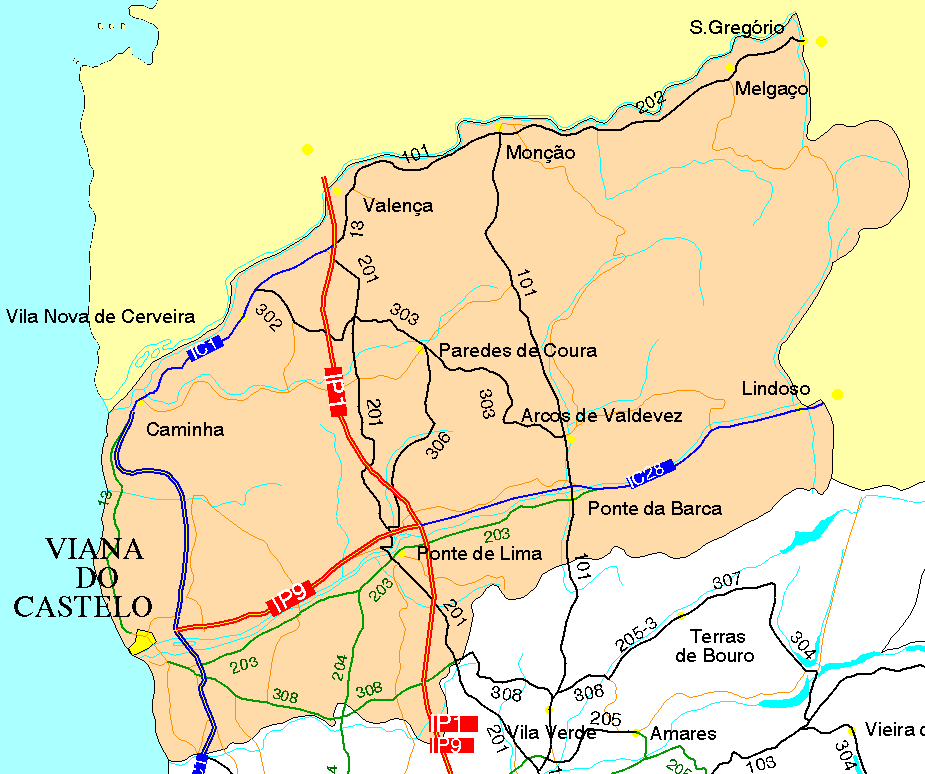
The origins of Ponte de Lima are lost in the mist of time. Inhabited by the «Limicos» in 150 B.C., several archaeological remains bear witness to the existence of «castros» (pre-Roman settlements) as well as Roman «villæ» standing on the banks of river Lima or along the ancient military road leading from Braga to Astorga (in Spain), the names of which are still preserved by the local toponymy.
According to the legend, when the Romans reached this point on their march through Iberia they had a great deal of trouble leaving because the soldiers were convinced the Rio Lima was the River Lethes - the mythical river of oblivion - and that if they crossed it they would forget everything. It was only after their leader, Decimus Junius Brutus, plunged ahead and shouted back their legionaries' names that they braved the waters.
The Roman bridge after which Ponte de Lima is named supposedly marks the very spot, and is part of the Roman road from Braga to Astorga in Spain. It is just one of several well-preserved historical features which give the town its character, though there is no pressure for major sightseeing here: the charm of the place lies in its sandy riverbank (the site of fantastic bimonthly markets and annual fairs) and shady riverside walks, its rural surroundings and laid-back atmosphere.
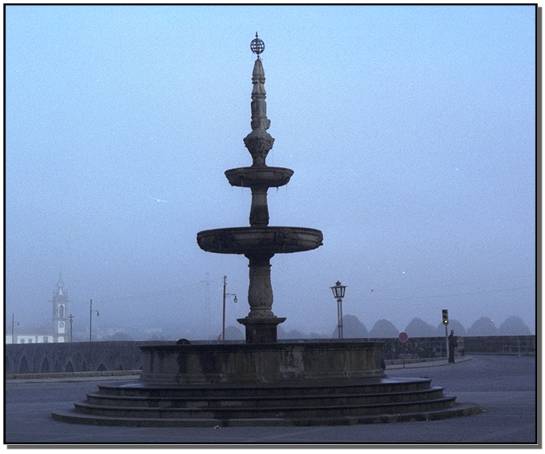 As the headquarters of Turismo de Habitação ,
it also offers more properties than any other town. Unfortunately for traditionalists, a golf course and race course have recently opened too, marking Ponte de Lima's coming-of-age in up-market tourism.
As the headquarters of Turismo de Habitação ,
it also offers more properties than any other town. Unfortunately for traditionalists, a golf course and race course have recently opened too, marking Ponte de Lima's coming-of-age in up-market tourism.
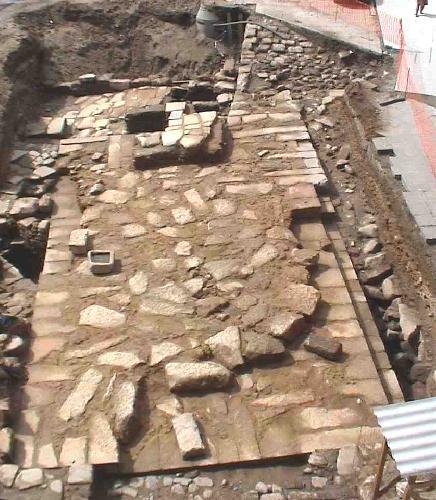
The present borough of Ponte de Lima lies between the banks of rivers Neiva and Lima and comprises 51 parishes. A population of 45000 spreads over 321 km2 of unspoilt countryside, full of art and natural beauty and rich in cultural heritage.
For a town map please click here . Buses stop at the new bus station on the edge of the town and on Avenida António Feijó . From the Avenida, continue down the fill towards the river front. Turn right along it for the main square, Largo de Camões , with cafés, restaurants and a 16th century fountain.
The old bridge crosses the Rio Lima here, connecting Ponte de Lima with Arcozelo on the other side. Further downstream is the modern Ponte de Nossa Senhora da Guia, carrying the Braga to Valença N201 highway. A newer part of town stretches uphill, south and east of Praça da República , but all sights of interest are in the old town along the riverside. Currently (March 2000) some archæological diggings are under way in Largo de Camões which have uncovered further archs of the bridge (earthed in the 19th century) and, as part of the primitive, rather intricate urban structure of the spot, the foundations of the Grilo 's Tower (see picture) which was once part of the town's walled fortifications.
| General Information |
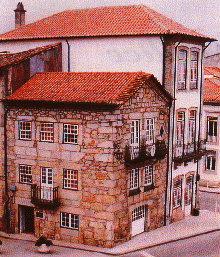
| Monuments |
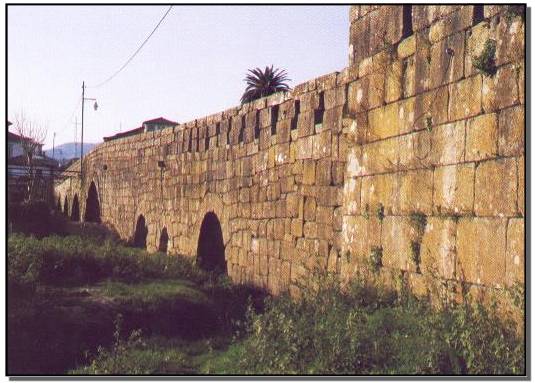
The old bridge across river Lima (nr.17 on this map ) consists of two segments. The 3-arched segment on the north-bank dates from the Roman times. It was built with the intention of proceeding along the military way leading from Braga to Astorga through the «Limicos» territory. A few remains such as milestones in the village of Labruja, bear witness to the existence of this ancient way. The 31-arched bridge across the Lima dates from the 14th century and was restored the following century. In between one still sees the square foundations of the so-called Torre Velha (Old Watch Tower), demolished in the 19th century. The bridge is off limits to motor traffic, but watch out for horse riders who often gallop across the bridge at dusk, instantly plunging the scene back into medieval days.
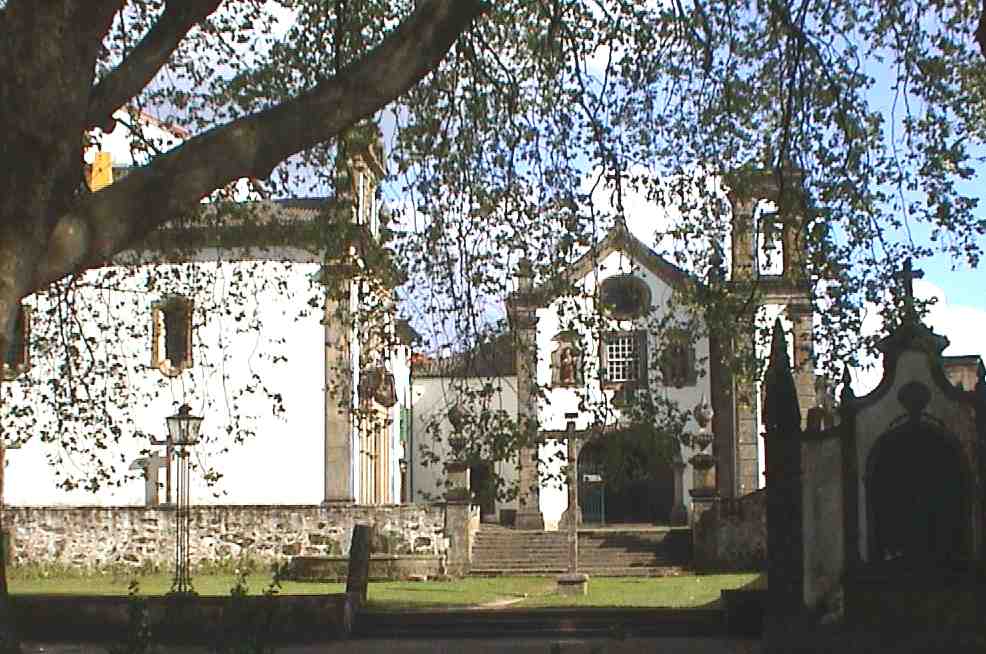
Downstream from the bridge, just off the Alameda, a riverside pedestrian only avenue of huge plane trees (usually called Avenida dos Plátanos ), is the Renaissance Igreja de Santo António dos Frades (nr.16 ), formerly part of a convent. Adjacent to this is the 18th century Igreja de São Francisco dos Terceiros, now a rambling museum of ecclesiastical, archæological and folk treasures. The highlight is the church itself, with gilded baroque altars, pulpits and an early 19th-century organ. The museum offers guided tours daily, except Tuesdays, from 9 am to noon and 2.30 to 5pm. Ring the bell and wait for the curator to emerge. Admission is 200$00.
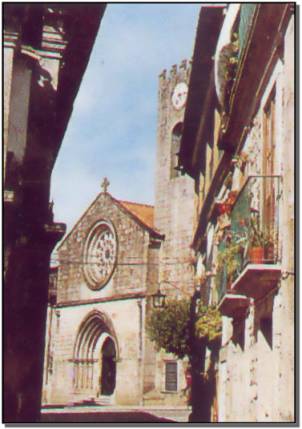
The parish church, off Rua Cardeal Saraiva (nr.13 ), is one of several eye-catching medieval monuments in this part of town. It dates from the 14th century but was remodelled in the 18th century. A fine Romanesque doorway remains from earlier days.
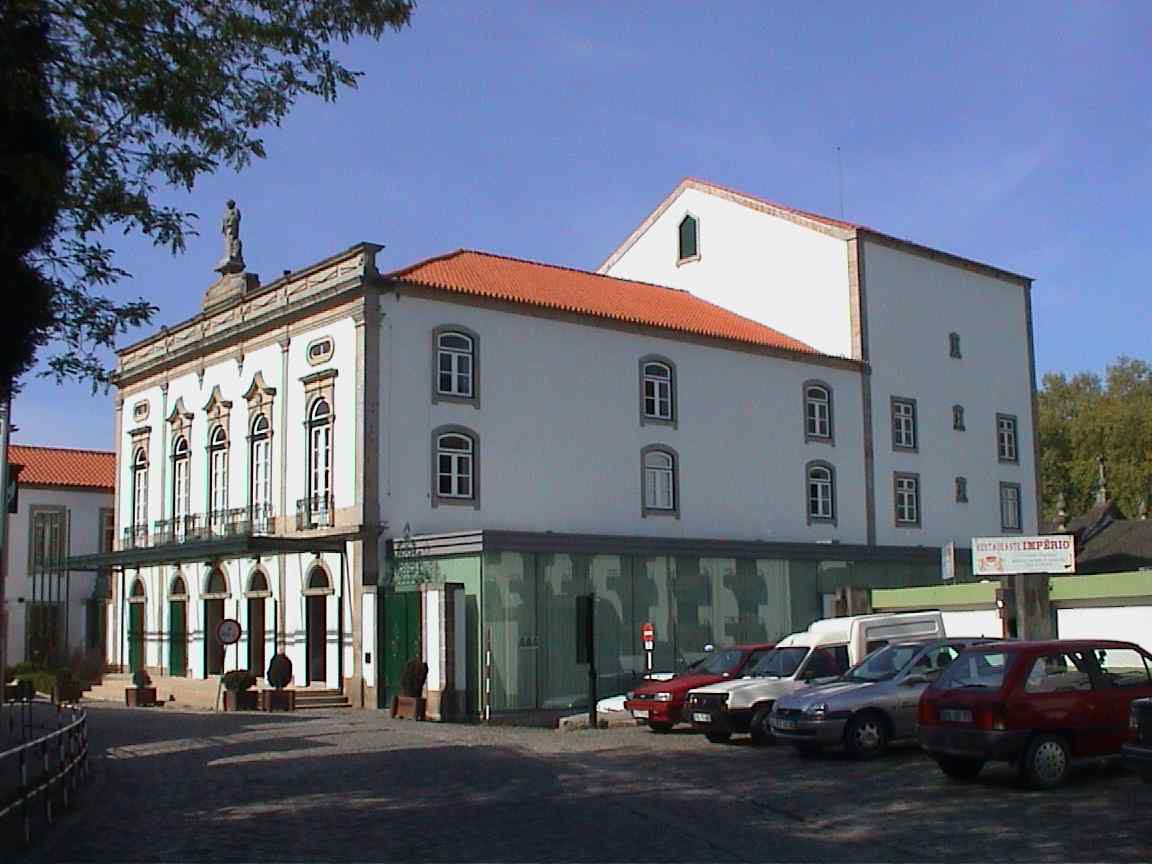
The church annex to it is the Refoios parish church. The monastery's main building was in a very poor condition a decade ago when it was acquired by the government. Major restoration work had to be carried out before it could eventually host the School of Agriculture of Viana do Castelo Polytechnic. Not very far from this Monastery, a 12th-century tower can be found which is regarded by specialists as the oldest surviving example in the country of the medieval torres , isolated towers where food supplies were kept in case of foreign aggression.
| Activities |
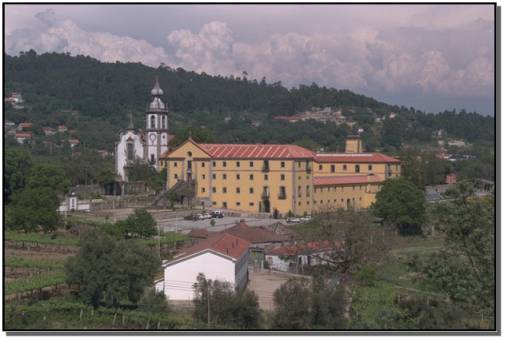
The huge Monday market, held twice a month, has been held in Ponte de Lima since 1125, when Dona Teresa (wife of Henri of Burgundy, Count of Portucale) granted Ponte de Lima a royal charter. It is the oldest market in the country held every fortnight for more than 800 years. This explains the local aphorism about Mondays either being «married» or «single» in Ponte de Lima , depending upon the market alternation. Spreading from the market area along the riverbank downstream from the Roman bridge, it offers everything from agricultural implements, baskets and wine barrels to fresh fruit, cheese and bread, shoes, hats and t-shirts.
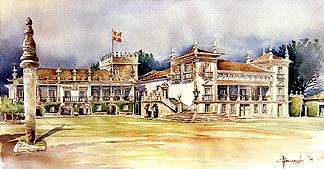
Ponte de Lima's Turismo has produced Trilhos , a folio of half a dozen easy, illustrated walks ranging from seven to 14 km (though the maps and details are not totally reliable). Almost everywhere around Ponte de Lima offers enticing walks through villages and cobbled lanes trellised with vines. Take a picnic, though: cafés and restaurants are few and far between.
For centuries, pilgrims bound for Santiago de Compostela preferred the Ponte de Lima way (part of the military Roman road leading from Braga to Astorga) for its being shorter, however harder and rougher across the Labruja mountain. This «Santiago route» is still maintained and is among the best preserved in Europe. A milestone of this road (turned pillory) can be seen at Bertiandos, on the courtyard of a stately house.
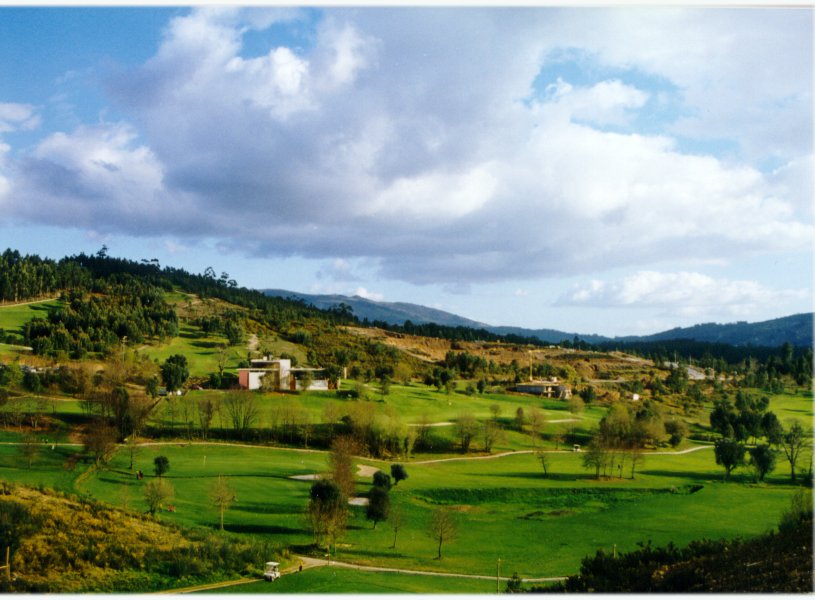
The Campo de Golfe de Ponte de Lima (Tel. 258 743 414; Fax. 258 743 424) is a couple of km south of town, off the Braga road. The 18 hole, par 71 course covers the wooded slopes above town, commanding grand views. The clubhouse includes a restaurant and golf supplies shop.
You will pass by the Capela do Anjo da Guarda (Guardian Angel chapel, nr.18 ), a little stone work quadrangular monument which is worth a look at. It shelters a beautiful ancient granite sculpture which is lodged at the bottom of the chapel. People say it could probably represent S. Miguel do Abrigo who is holding hand scales meant for weighing souls and their sins. This chapel is certainly ancient but no one knows exactly when it was erected. It was rebuilt several times being damaged and destroyed in part by the torrential and persistent floods of the river Lima.
The Arnado is a revival of Ponte de Lima's old bathing tradition, which declined in the last decades when seaside beaches became more fashionable.
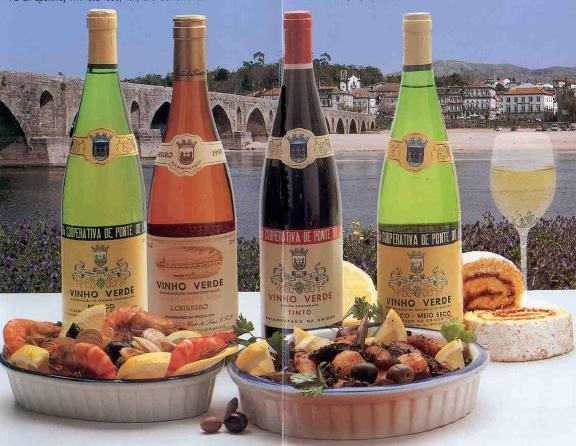
| Special Events |
![The Alameda and Nossa Senhora da Guia Chapel [nr.12 on the map]](./images/iguia.jpg)
| Places to Stay |
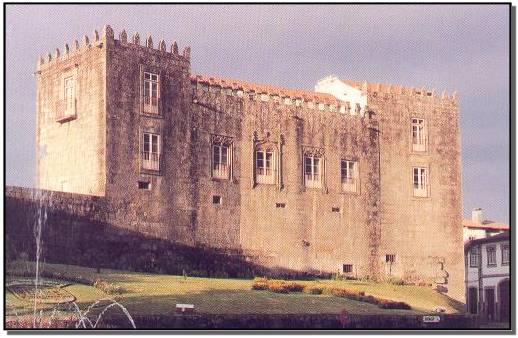
There are many old palaces and manor houses in the town and surrounding area of which a large number now receive house guests. These are family homes as opposed to hotels, offering a very different kind of holiday experience with a personal touch and a «learned» bent. In many cases the titles of the owners are older than the nation itself.
Just a decade ago most of these houses were facing decay, but with government support they have been painstakingly restored to their former glory and have now opened their doors to receive guests. They add character and beauty to the area.
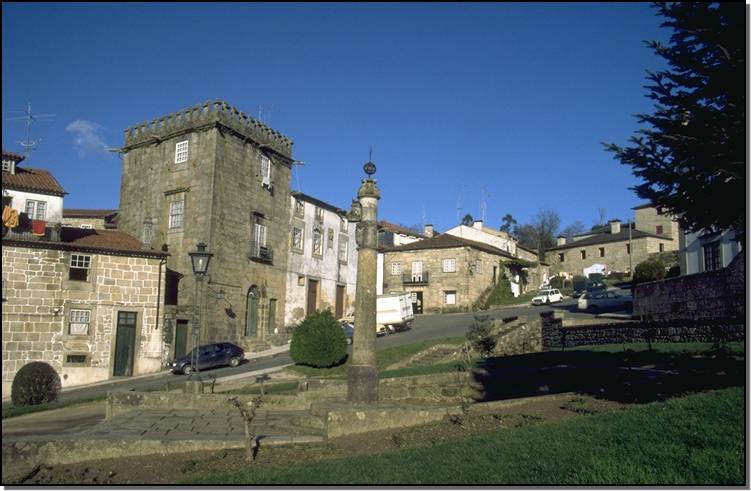
The town is the headquarters of two associations of owners of manor houses (see General Information) whose members are throughout Portugal, Madeira and the Azores. The TURIHAB association offers 24 properties in the borough of Ponte de Lima, ranging from modest farmhouses to fabulous mansions. You can book through the associations, the Turismo or (often more cheaply) directly with the owners. An official price list orders properties according to quality and elegance.
Among the more affordable choices near Ponte de Lima are Casa de Crasto (Tel. 258 941 156), a 17th century house one km east, off the Ponte da Barca road, and Casa do Arrabalde (Tel. 258 742 442), across the bridge in Arcozelo, a restored 18th century manor house with additional apartments in the grounds.
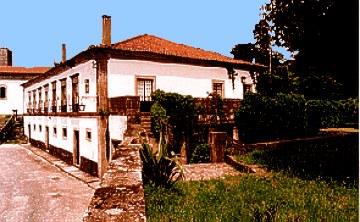
Particularly attractive for its accurate restoration and location in the old part of town is Casa das Pereiras (Tel. 258 942 939). Most other choices are located out of town, for instance Quinta da Aldeia in Ribeira (Tel. 258 942 268), a secluded manor house a couple of km east, off the Ponte da Barca road, with four cottage-apartments, plenty of outdoor space for kids and even a miniature playhouse. It's a microcosm of the region: buffalo carts creak down the cobbled lane while modem concrete houses are being built around the corner.
![The Misericórdia church [nr.9 on the map]](./images/misericordia.jpg)
Poshest of all in town is the dull modern Albergaria Império do Minho (Tel. 258 741 510; fax 258 942 567) in a shopping complex on the riverfront Avenida dos Plátanos, nearby the theater. Singles/doubles with bath, satellite TV, and air-con are 7,500$00/9,000$00 with breakfast.
Pensão Beira Rio
| Places to Eat |
Restaurant A Carvalheira (Tel. 258 742 316) in Arcozelo is among the
best places to eat in Ponte de Lima
. It will take you a 5 minute walk to get there
from the medieval bridge, once you've crossed the river.
It is a busy place, so you may need to call and reserve a table.
Try their «bacalhau na broa», a dish which combines two traditional
ingredients of Portuguese food: codfish and maize bread.
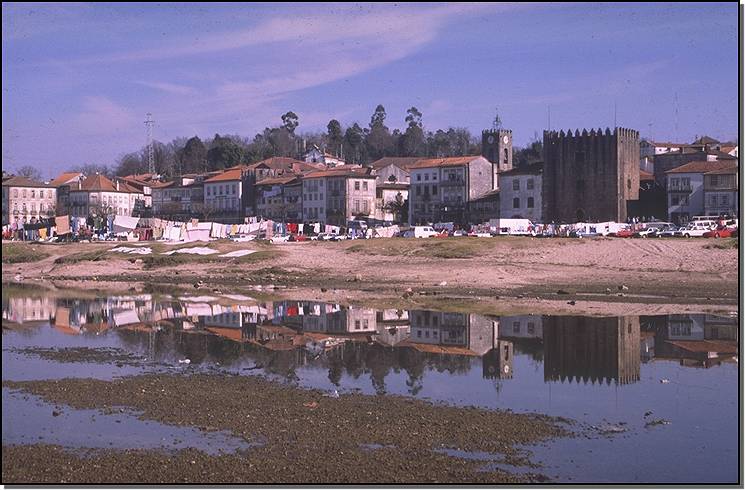
Closer than A Carvalheira and overlooking the river and town is the restaurant of the Clube Náutico (Tel. 258 944 899). You just have to walk along the old bridge, go down the iron stairs on the left once you've reached the place of the Torre Velha (Old Watch Tower) and then have a pleasant walk along the footpath on the other bank of the river until you reach the club.
Traditionalists will enjoy Restaurante Encanada (Tel. 258 941 189) on Passeio 25 de Abril (above the market). Tucked away up Rua Formosa (head inland from Largo de Camões and turn left up a narrow lane) is Restaurante Tulha (Tel. 258 942 879), a smart place favoured by late-night diners, with prices around 1300$00 per dish. The best cafés for watching the world go by are in the Largo de Camões, especially the old Confeitaria Havaneza .

Another choice is Restaurante Expresso (Tel. 258 942 849), in Praça da República, in front of the Town Hall. Both Pensão São João and Pensão Beira Rio (see Places to Stay) have popular and reasonably priced restaurants, run by a bevy of mums and grannies. Also worth checking out are Restaurante Manuel Padeiro (Tel. 258 941 649) on Rua do Bonfim, near the market, and Restaurante Casa Gaio (Tel. 258 941 251) on nearby Rua Agostinho José Taveira. Both serve the local speciality, arroz de sarrabulho (a minced pork and pork blood dish) and lampray or local sável (shad fish) in season. Prices are in the 1,000$00 to 1,500$00 per dish range at both.
If you wish to go really out of town, you may have dinner in the golf course clubhouse (Tel. 258 743 416) in Fornelos, on the N201 road south to Braga, or at Restaurante Sonho do Capitão in Correlhã (Tel. 258 741 138) on the N203.
| Getting There & Away |
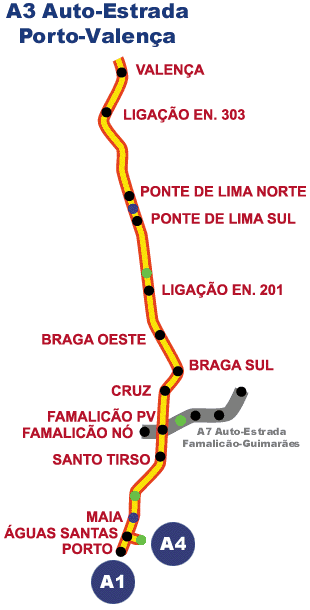
Oporto (Porto ) airport is by far the closest to Ponte de Lima . The A3 motorway linking Porto to Spain passes nearby Ponte de Lima (2km). There are direct flights to this airport from most European main cities.
From the airport, take the direction of Porto (see the map on the right) and then follow the blue information signs indicating A3/Braga or A3/Valença. Once on the A3 just keep going until you reach the Ponte de Lima Sul exit, leave the motorway and turn right. Please note that you will have to pay a motorway toll. The taxi fare should be something between 7,000$00 and 9,000$00.
The following rent-a-car companies operate from the airport :
AVIS (Tel.: +351 229 449 525), EUROPCAR (Tel.: 229 482 525), HERTZ (Tel.: +351 229 437 690), SIXT (Tel.: +351 229 440 797). AUTO JARDIM (Tel.: +351 229 413 661), AURO RENT (Tel.: +351 229 440 111 / 229 415 939), AA CASTANHEIRA BUDGET (Tel.: +351 219 942 402), GARA (Tel.: +351 229 415 939),(Further information also available from www.portugal-web.com .)
| Credits and Links |
Back to the MPC 2000
Home Page.